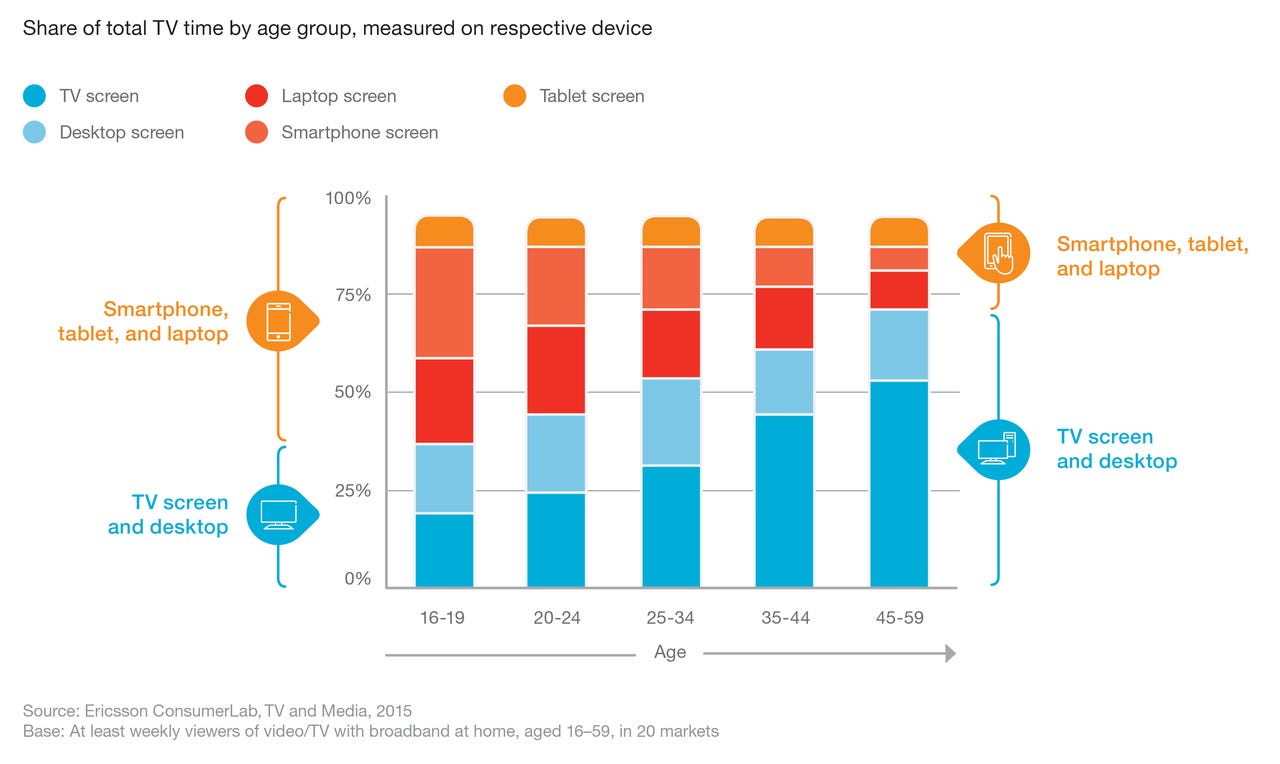TV fans drop the remote, pick up their smartphones instead


But before the media companies congratulate themselves on being so popular the report also shows that half of consumers complain that they can't find anything worth watching on "linear" TV on a daily basis. Consumers feel that any recommended features are simply not smart or personal enough.
Still, gathering around the TV is not going away completely anytime soon as according to the survey, it remains popular "mainly because of the access it gives to premium viewing and live content, like sports, as well as its social value". In this respect, linear TV often acts as a 'household campfire'".In 2011, people estimated that they spent 2.9 hours per week watching streamed TV series, programmes and movies but this has doubled since then to six hours per week.
Even though wi-fi caters for a significant part of TV and video data traffic, in some markets, such as the US and to some extent South Korea, mobile data "has taken a significant part of the viewing consumption", the report says. In the US, cellular/mobile data usage makes up almost a third of the total data consumption for TV and video.
However, this is dependent on technology used, says Ericsson: in the US,4G users use 2.5 times the amount of data on their TV and video viewing than 3G users. In the UK it is three times as much and in South Korea four times.Since 37 percent of consumers think the cost of mobile data away from the home is limiting their mobile viewing continued growth will be dependent on the availability of services that enable cost-efficient mobile viewing, "for example through bundling mobile data andvideo services," the report said.
What we watch is changing too: the average time spent watching e-sports is now 46 minutes per week, while educational or instruction videos show even higher usage, averaging 73 minutes per week .
Perhaps unsurprisingly, live sports have the most significant gender differences with the average man spending over three hours a week watching it while women only spend an hour. Women spend more time watching TV series, other TV programmes and recorded content, the report found.
Further Reading:
Are you getting enough data? Video streaming and apps create extra demand from smartphone users
iiNet takes top place in Netflix speed rankings
Sling TV expands offerings with EPIX movies and VOD